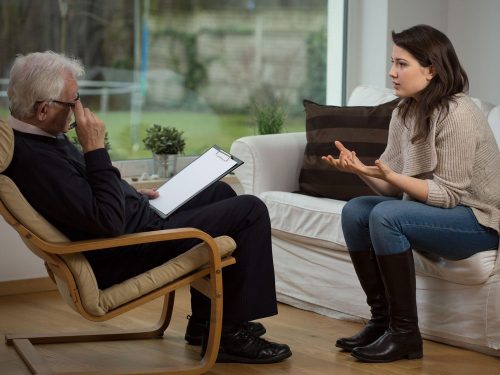
Source: readersdigest.ca
I have a therapist friend who once told me that he thought that he became a therapist to make a difference in other people’s lives and because he was hungry for conversations while he was growing up. During his childhood, he lived in a working-class New York community where none of the children and definitely no one in the families actually talks to each other, even for a few minutes. Neighbors chitchat and gossip, argue about their favorite athletes and sports champions, express daily affection, or display emotional outbursts from time to time, but no conversations that had a direction or topics lasting for months.
He then decided to be a psychologist and realized that counseling would be a vital part of his profession. Talk therapy is, after all, a specialized kind of informative conversation. However, he said that as far as his psychotherapy education went, he was terribly wrong. Yes, in between classes, they scrutinized anything and everything that moved, but nothing about what they heard, thought, imagined, or felt seemed too insignificant to talk about for hours.
On the other hand, when therapy sessions started, all of this change. Surely, all competent therapists converse with their clients to some extent – it is the essence of therapy. However, as a field, Colby (my therapist friend) says that therapists have been unaware of the type of conversation that enhances their strategies and models. It is the same as being equipped with a weapon that several people have but cannot recognize. But without conversations, treatment becomes a workbook that lacks the potency to make clients feel comfortable and connected with their mental health providers.
For certified therapists who are comfortable in their professions, there is truly a technique to create great conversation, meaning, and purpose far beyond merely passing the time. But how does a competent therapist start it?

Source: readersdigest.ca
Colby shares that he uses what he refers to as ‘crafted spontaneity,’ which implies that if therapists follow signals of life that clients produce and the lives occurring within their lives, they could have an unforeseen encounter that is external to them the framework of the particular therapy model. If they recognize ambiguity and make conversations that result in the client’s experiencing his undeclared self in the therapy connection, this can definitely alter the client’s self-concept, life story, and behavior.
So how is it done? Through the years as both supervisor and therapist, Colby has cultivated the unforeseen with thousands of clients and listened to therapy sessions as narrated by other therapists. Consequently, he has started to see tips and guidelines for the often-inconsistent ability to make free and instinctive therapeutic conversations.
Below are some of the most important guidelines that my therapist friend has gathered to share with us.
Create A Theme. When most people are so divided in this digital age, therapy is some adhesive for personal coherence. Creating a theme by doing a series of discussions helps attach the self in one piece. The course starts when the therapist observes a glimmer of curiosity and is open to knowing more about it. As the theme concerns the patient, it repeatedly emerges, uniting into an undeclared part of the self that he can eventually embrace.
Follow The Light. One real indication that you and the client mutually benefit from a therapeutic conversation is that you don’t exactly know where the conversation is going. Most people shun life’s randomness, and they undoubtedly do the same thing in therapy. It’s not difficult, then, to wonder: “What am I exactly doing here? Do I really get something out of this session?”
So the most important skill to develop, the knowledge that walks us through everything else, is acknowledging that if the conversation elicits a spark of interest and passion in the client and you are acquiring new information – if you and the client feel comfortable and feel more active in the therapy room – then almost undoubtedly, you are on your way to something wonderful and beneficial. You cannot foretell where the direction of the unscripted conversation will bring you.

Source: biltmorecounseling.com
Perhaps it is as it must be. In this captivating, although often exhausting, therapy profession, it is not only about the therapist doing something systematic for or to the client. It is also about the wide array of possibilities for transformation in both the client and the therapist that the minute, daily marvel of talk and conversation can spark if – through patience, focus, awareness, and passion for the craft entailed in this – therapists permit it to flow and manifest its marvelous powers.
I had had the opportunity to sit with Colby in the therapy room when I had my moments of doom and misery a few years ago. I didn’t realize that I did most of the talking, even if I met him once or twice in the neighborhood. Indeed, a competent therapist like Colby can take you off your guard and enable you to release pent-up emotions through spontaneous, meaningful conversations.